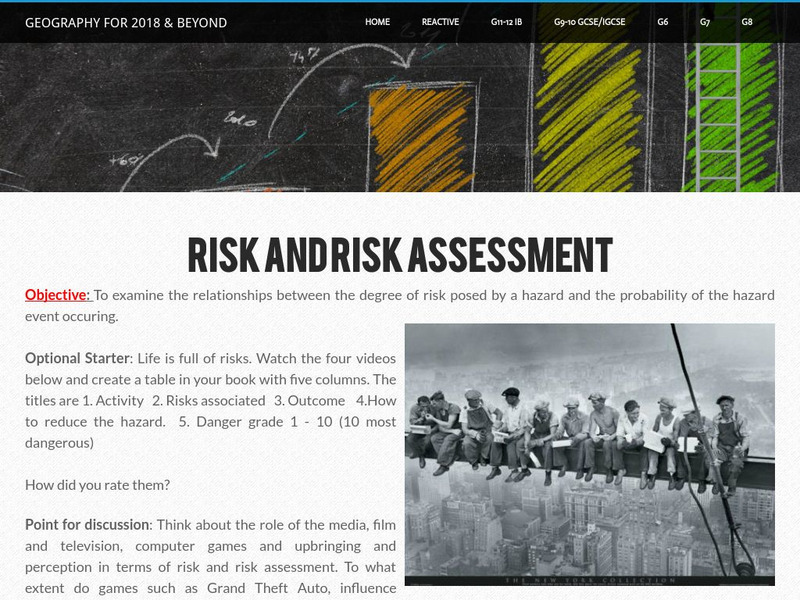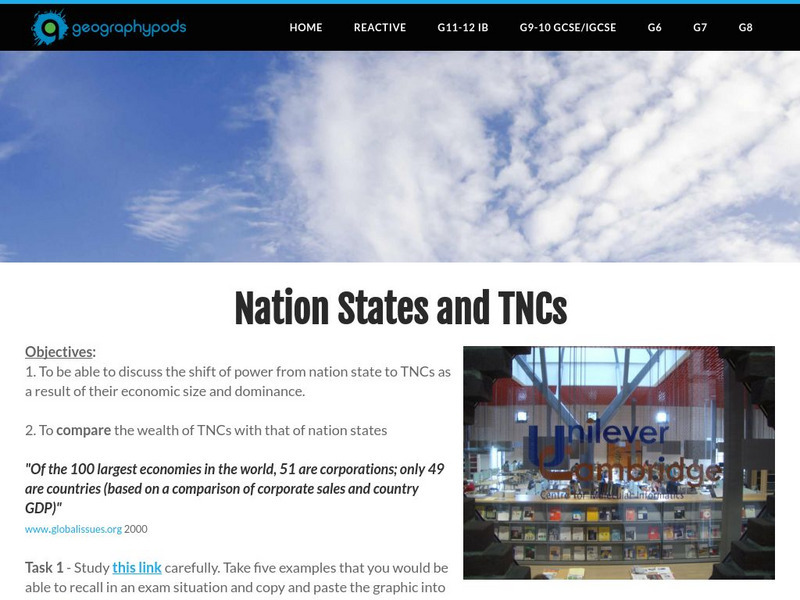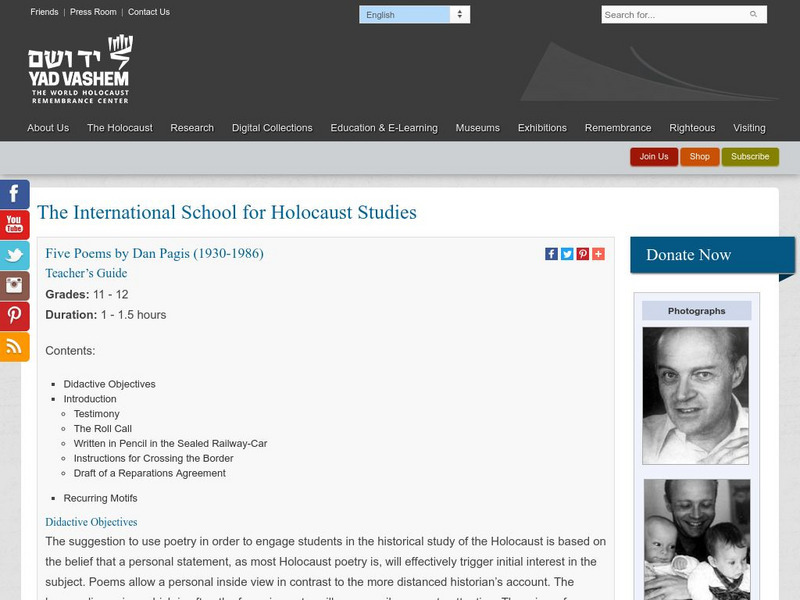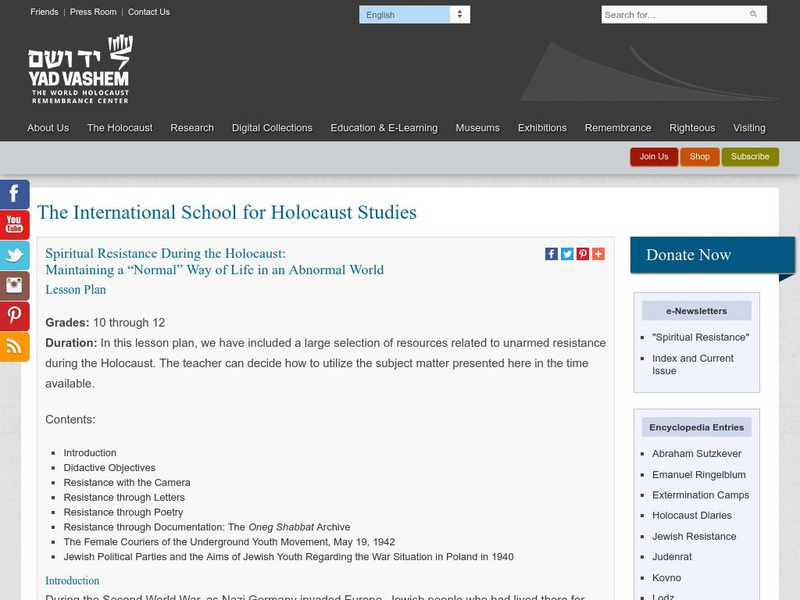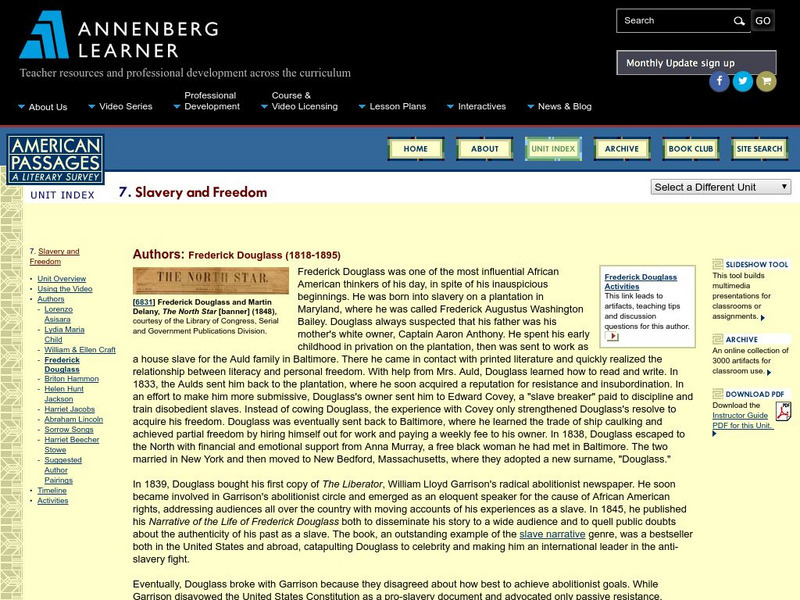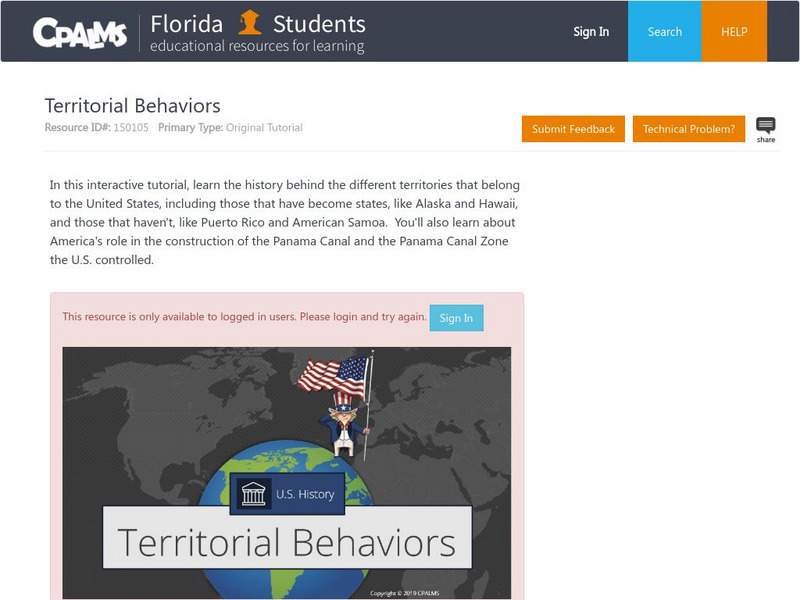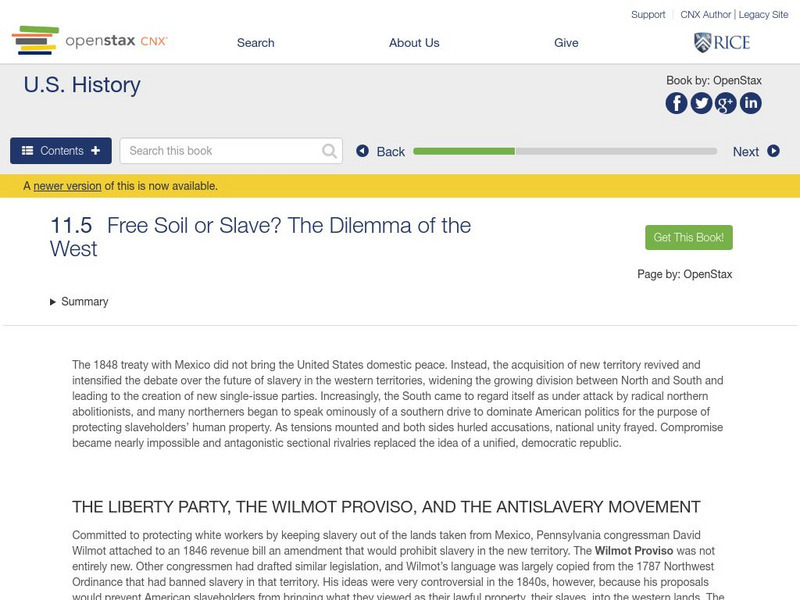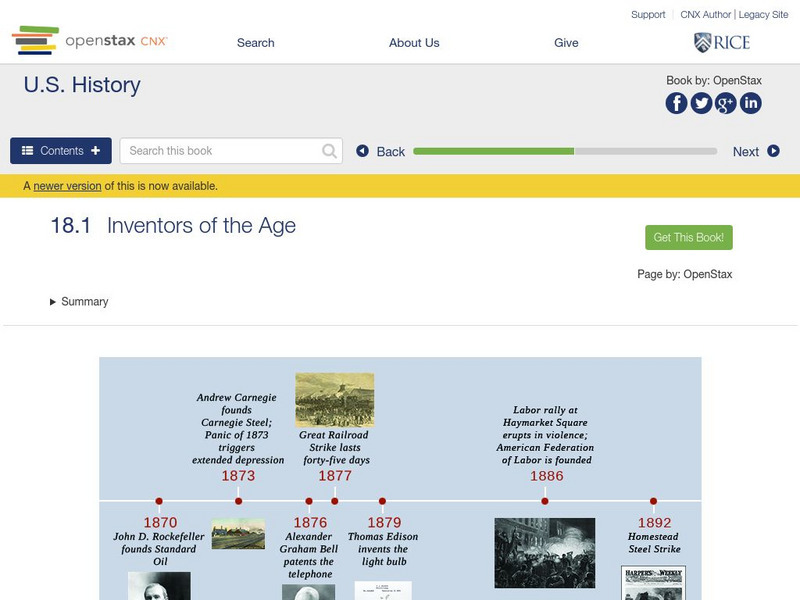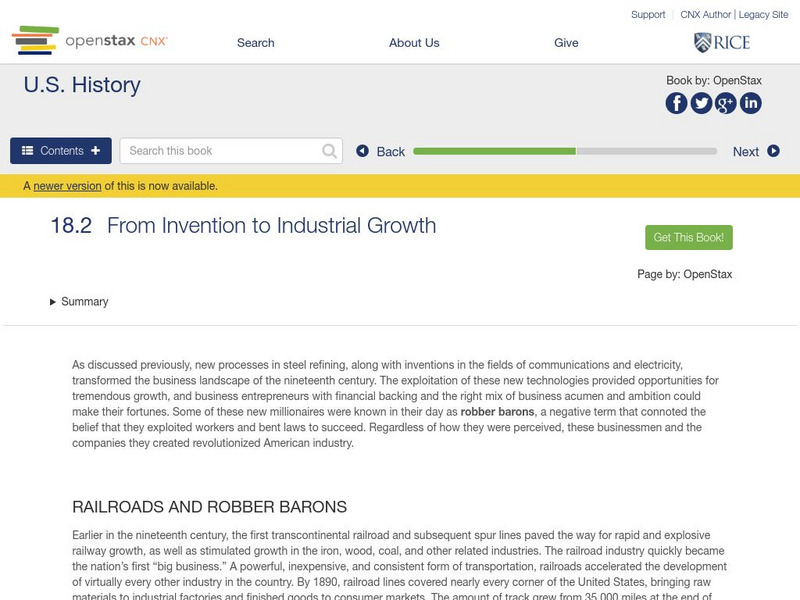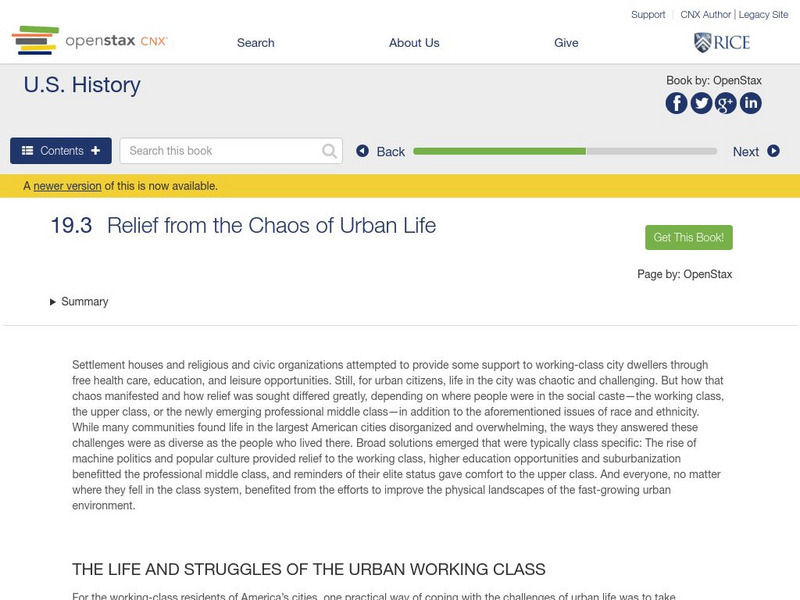National Institutes of Health
Paleoindian Large Mammal Hunters on the Plains of North America (1998)
Published journal article that details faunal studies, hunting, weaponry, hunting strategy, butchering, and ritual activities. Seven cultural complexes are considered: Clovis, Goshen, Folsom, Agate Basin, Hell Gap, Alberta, and Cody.
Geographypods
Geographypods: Hazards and Risk Management: Earthquakes
This learning module looks at earthquakes. It discusses areas of earthquake activity, how they are measured using the Richter scale, and how scientists try to predict earthquakes. Includes handouts, slideshows, activities, and videos.
Geographypods
Geographypods: Hazards and Risk Management: Risk and Risk Assessment
In this learning module, students learn how to assess the risk of a hazard or dangerous activity and the chance of a bad outcome. It examines various scenarios and case studies (e.g., bungee jumping, earthquakes, and tropical storms) and...
Geographypods
Geographypods: Global Interactions: Political Outcomes
In this learning module, students examine the economies of transnational corporations (TNCs) and compare them to those of nation states. Many TNCs are richer than nation states, which undermines the political sovereignty of those...
Yad Vashem, The World Holocaust Remembrance Center
Yad Vashem: Five Poems by Dan Pagis
Poetry can be used to invoke emotions and humanize events in history. Students will analyze poems written by Dan Pagis about the Holocaust and answer critical thinking questions. Included are the poems, background information, teaching...
Yad Vashem, The World Holocaust Remembrance Center
Yad Vashem: Spiritual Resistance During the Holocaust
In an effort to preserve their dignity and culture during the Holocaust, the Jewish people found ways to resist the Nazis. This lesson plan is broken down by resistance methods such as the use of the camera, poetry, letters, and...
US National Archives
National Archives: Lesson Plans Congress, the President, and the War Powers
Examine the power of Congress to make war by studying primary source documents from various wars throughout U.S. history. Students will analyze how the balance of authority between the legislative branch and executive branch has changed...
Other
Notes for Chapter 3: (Marginal Product)
This site provides a good analysis of the concepts of marginal product, marginal revenue product, marginal costs, and how a monopsonist determines wages and quantity of labor hired.
University of Missouri
Famous Trials: The Nelson Mandela Trial
Nelson Mandela was willing to die for his belief in a free society where all people can live in harmony with equal opportunities. Instead, he spent eighteen years in jail. Read this in-depth summary of his trial. Included are...
University of California
The History Project: Ideas and Strategies of the Woman Suffrage Movement
Although the campaign for Woman Suffrage in the United States began with the Seneca Falls Convention of 1848, six decades later the leaders of the movement could claim victories in only four, sparsely-populated Western states, Colorado,...
Annenberg Foundation
Annenberg Learner: American Passages: Slavery and Freedom: Frederick Douglass
This concise biography presents author/journalist Frederick Douglass, who was groundbreaking in his slave narratives and establishing "The North Star" abolitionist periodical in mid-nineteenth-century America. See "Frederick Douglass...
US National Archives
National Archives: u.s. V. Amistad: A Case of Jurisdiction
Students will review the Amistad case and use passages from the case explore the concept of jurisdiction and how a case travels through the federal court system. Also, included are links to the background of the Amistad case, a...
US National Archives
National Archives: Confronting Work Place Discrimination on the Wwii Homefront
African Americans were not able to take advantage of the booming industries as Americans were mobilizing for WWII. The FEPC was established to make sure Roosevelt's executive order providing for equal opportunities in defense industries...
CPALMS
Florida State University Cpalms: Florida Students: Territorial Behaviors
In this tutorial, students learn about the history of American acquisition of new territories including those that became states and those in other parts of the world. America's involvement with the Panama Canal is also covered. A PDF...
OpenStax
Open Stax: Indian Removal
By reading this section of a chapter on "Jacksonian Democracy," students will be able to explain the legal wrangling that surrounded the Indian Removal Act and describe how depictions of Indians in popular culture helped lead to Indian...
OpenStax
Open Stax: Free Soil or Slave? The Dilemma of the West
By reading this section of a chapter on "Westward Expansion," students will be able to describe the terms of the Wilmot Proviso and the Compromise of 1850, discuss why the Free-Soil Party objected to the westward expansion of slavery and...
OpenStax
Open Stax: John Brown and the Election of 1860
By reading this section from a chapter on " The Tumultuous 1850s," students will be able to describe John Brown's raid on Harpers Ferry and analyze the results of the election of 1860.
OpenStax
Open Stax: Making a Living in Gold and Cattle
In this section, students will learn about the major discoveries and developments in western gold, silver, and copper mining in the mid-nineteenth century. They will be able to explain why the cattle industry was paramount to the...
OpenStax
Open Stax: Industrialization and Big Business, 1870 1900: Inventors of the Age
In the Industrial Revolution, new products and inventions spurred the growth of big business. Learn about some of these inventions and the people who created them, for example, Alexander Graham Bell and Thomas Edison.
OpenStax
Open Stax: Industrialization 1870 1900: From Invention to Industrial Growth
This section of the textbook describes how new inventions spurred industrial growth in the 19th century and discusses the business methods and models of Andrew Carnegie, John Rockefeller, and J. P. Morgan.
OpenStax
Open Stax: Industrialization: Building Industrial America on the Backs of Labor
Learn about the lives of the working class in Industrial America, what led to the formation of labor unions, and why labor unions were not successful despite strike actions.
OpenStax
Open Stax: Growing Pains of Urbanization, 1870 1900: Challenges
Learn about some of the problems created by urbanization and some potential solutions to them.
OpenStax
Open Stax: Growing Pains of Urbanization: Relief From the Chaos of Urban Life
Learn how different economic classes in urban centers spent their leisure time in the late 19th century. Includes a good discussion of machine politics and the role it played in the lives of the lower classes, as well as its negative...
OpenStax
Open Stax: Gilded Age 1870 1900: Political Corruption in Postbellum America
Read about federal politics during the Gilded Age and why not much was accomplished during this time.




